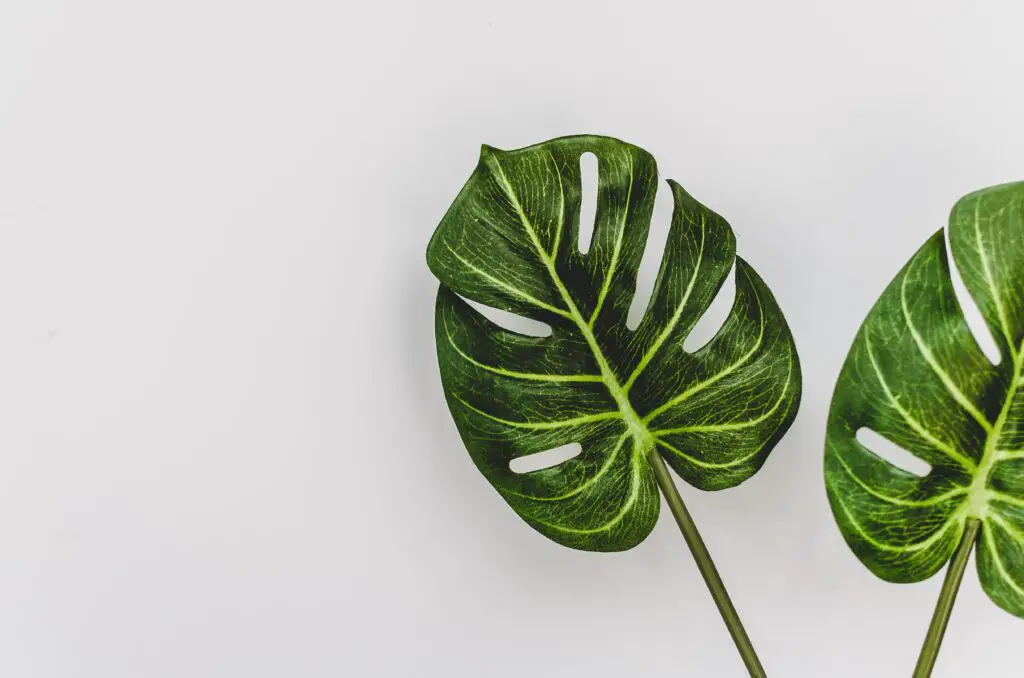Small brown spots on Monstera leaves can be a cause for concern for plant owners. These spots can indicate a variety of issues, ranging from improper watering to pests and diseases. Understanding the causes of these spots is key to preventing and treating them, and maintaining healthy Monstera plants.
Monstera plants are known for their distinctive leaves, which feature large, green, and often perforated surfaces. While these plants are relatively easy to care for, they can develop brown spots on their leaves for a variety of reasons.
Common causes of brown spots on Monstera leaves include overwatering, low humidity, pests and diseases, and excessive exposure to sunlight. Identifying the cause of the spots is the first step in treating and preventing them.
Preventing brown spots on Monstera leaves involves proper care and maintenance of the plant. This includes ensuring the plant is watered correctly, providing adequate humidity, and avoiding overexposure to sunlight.
Treating brown spots may involve removing infected leaves, adjusting watering or fertilization practices, or using pesticides to manage pests. With proper care, Monstera plants can thrive and remain free of brown spots.
Key Takeaways on Small Brown Spots on Monstera Leaves
- Understanding the common causes of brown spots on Monstera leaves is key to preventing and treating them.
- Proper care and maintenance of Monstera plants can help prevent brown spots from developing.
- Treating brown spots may involve removing infected leaves, adjusting watering or fertilization practices, or using pesticides to manage pests.
Other top posts in this category:
- Rhododendron Leaves Turning Yellow with Brown Spots
- Pot Leaves Turning Yellow with Brown Spots
- Yellow Leaves and Brown Spots On Plumeria Leaves
Understanding Monstera Plants
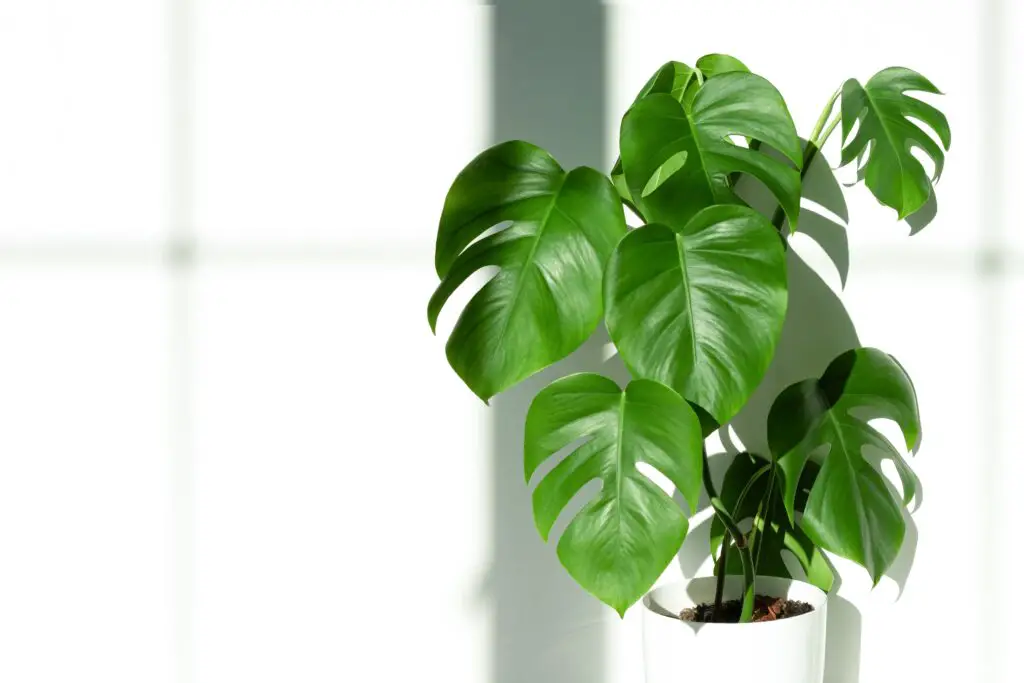
Monstera plants, also known as Monstera deliciosa, are tropical plants that are native to the rainforests of Central America. They are known for their large, glossy, and perforated leaves that can grow up to three feet long. These plants are popular among indoor gardeners due to their unique look and easy-to-care-for nature.
Monstera plants are a type of climbing plant that can grow up to 60 feet tall in their natural habitat. However, when grown indoors, they typically reach a height of 6 to 8 feet. These plants prefer bright, indirect sunlight and can tolerate low light conditions, making them a great choice for indoor gardening.
One of the most distinctive characteristics of Monstera plants is their variegated leaves. Variegated Monstera plants have leaves that are partially white, giving them a unique and striking appearance. However, these plants can be more difficult to care for than non-variegated Monstera plants.
Monstera plants are generally easy to care for and require minimal maintenance. They prefer well-draining soil and should be watered when the top inch of soil is dry to the touch.
Overwatering can lead to root rot, which can cause small brown spots to appear on the leaves. Additionally, Monstera plants benefit from occasional fertilization to promote healthy growth.
Small Brown Spots on Monstera Leaves – 5 Common Problems
Monstera plants are known for their large, lush leaves, but sometimes those leaves can develop small brown spots. These spots can be caused by a variety of factors, including overwatering, incorrect light conditions, temperature and humidity issues, pest infestations, and fungal and bacterial diseases.
1. Overwatering and Underwatering
Overwatering is one of the most common causes of brown spots on Monstera leaves. When a plant is overwatered, its roots become waterlogged and can’t absorb oxygen properly, leading to root rot. This can cause brown spots to appear on the leaves, as well as other symptoms like yellowing and wilting.
On the other hand, underwatering can also cause brown spots on Monstera leaves. When a plant doesn’t get enough water, its leaves can become dry and brittle, leading to brown spots and other damage.
2. Incorrect Light Conditions
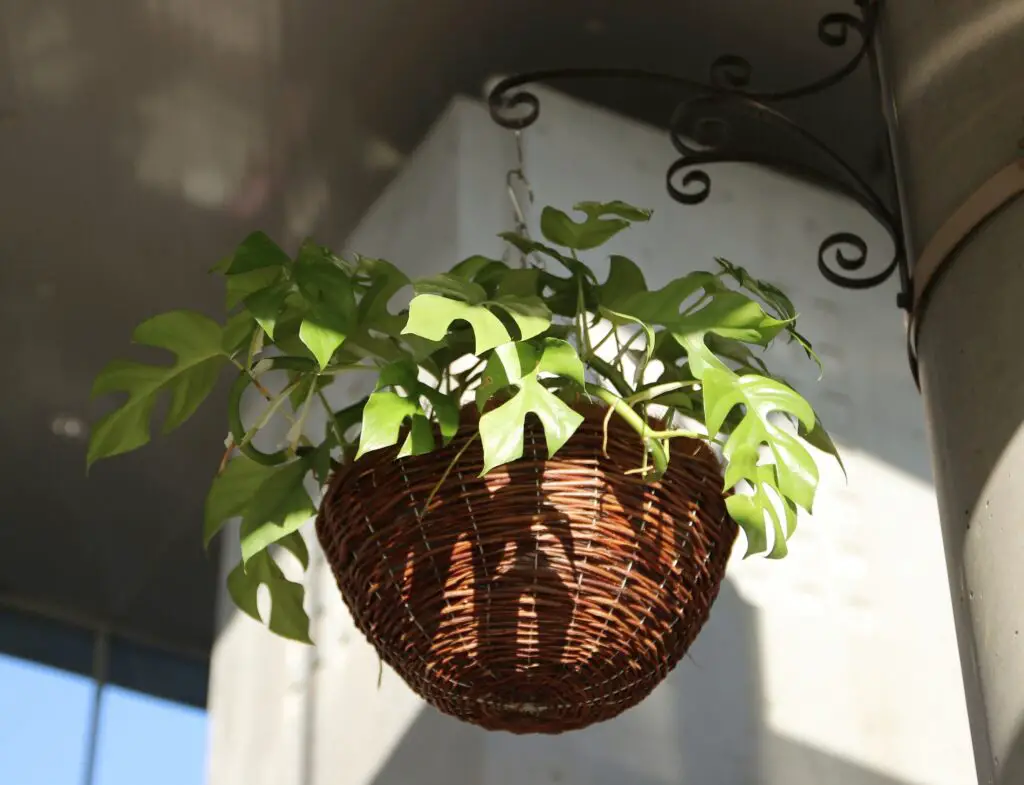
Monstera plants prefer bright, indirect light, but they can also tolerate some direct sunlight. However, too much direct sunlight can cause sunburn and brown spots on the leaves. On the other hand, too little light can cause the leaves to become pale and develop brown spots as well.
3. Temperature and Humidity Issues
Monstera plants prefer warm temperatures and high humidity. If the temperature is too low or the humidity is too low, the leaves can become dry and develop brown spots. Additionally, drafts can cause the leaves to become damaged and develop brown spots.
4. Pest Infestations
Pests like spider mites, scale, and thrips can cause brown spots on Monstera leaves. These pests feed on the sap of the plant, causing damage to the leaves and other parts of the plant.
5. Fungal and Bacterial Diseases
Fungal diseases like fungal leaf spot and bacterial diseases like bacterial leaf spot can cause brown spots on Monstera leaves. These diseases are caused by pathogens that infect the plant, causing damage to the leaves and other parts of the plant.
Identifying Brown Spots on Monstera Leaves
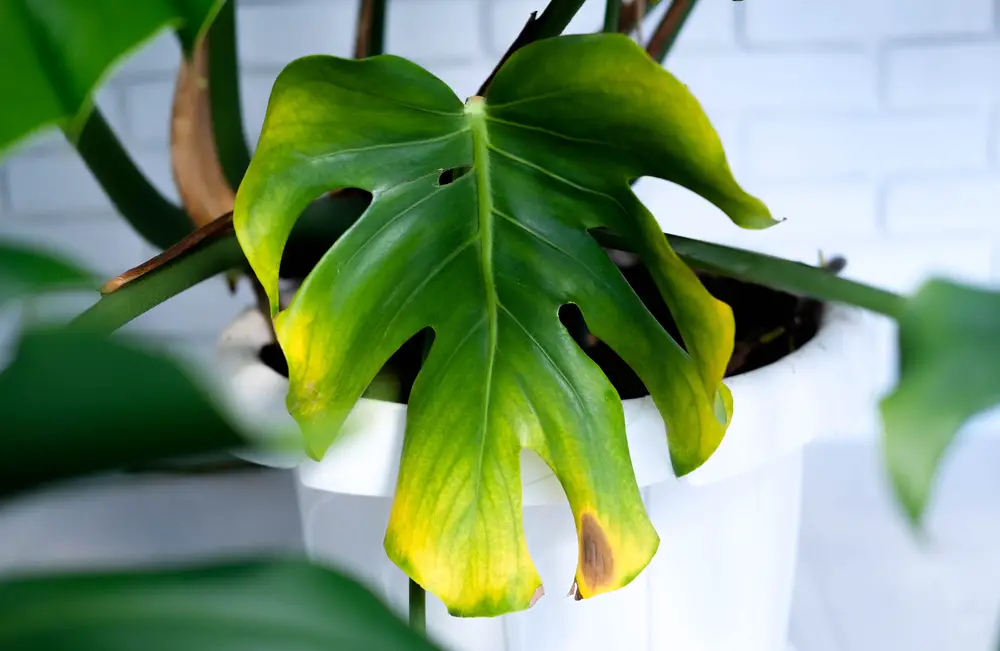
Monstera plants are known for their large, glossy, and attractive leaves that can add a touch of tropical beauty to any space.
However, small brown spots on Monstera leaves can be a common issue that can affect the plant’s appearance and health. In this section, we will discuss how to identify brown spots on Monstera leaves and what they may indicate.
Spot Color and Shape
Brown spots on Monstera leaves can vary in color, ranging from light tan to dark brown or black. The spots may be circular or irregularly shaped and can have a defined edge or a fuzzy border. Some spots may have a yellow halo or yellow rings around them, while others may have bumps or raised areas.
Location and Distribution of Spots
Brown spots on Monstera leaves can appear on the upper or lower surface of the leaf, and they can be scattered or concentrated in one area.
The location and distribution of the spots can provide clues about the underlying cause. For example, if the spots are primarily on the lower leaves, it may indicate a fungal disease. If the spots are on the upper leaves, it may be due to excess light or heat.
Number and Size of Spots
The number and size of brown spots on Monstera leaves can also vary. Some leaves may have only a few small spots, while others may be covered in a network of spots. The size of the spots can also range from tiny specks to large patches that cover most of the leaf surface.
Preventing Brown Spots on Monstera Leaves
Monstera plants are a popular choice for indoor gardening enthusiasts, but they can be susceptible to brown spots on their leaves. These spots can be caused by a variety of factors, including improper watering techniques, suboptimal light and temperature conditions, poor humidity management, pest infestations, and diseases.
By taking a few preventative measures, however, it is possible to keep your Monstera plant healthy and free of brown spots.
1. Proper Watering Techniques
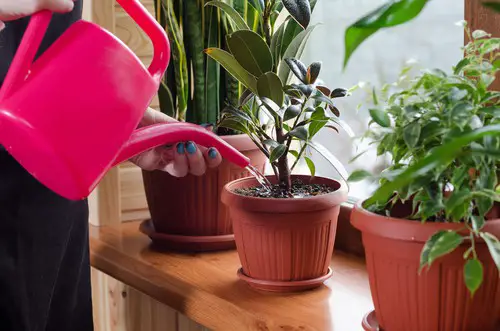
One of the most common causes of brown spots on Monstera leaves is over or under-watering. To prevent this, it is important to establish a regular watering schedule and to monitor the soil moisture level regularly.
Monstera plants prefer to be watered with filtered or rainwater, as tap water can contain chemicals that can harm the plant. When watering, make sure to saturate the soil completely and allow any excess water to drain out of the pot’s drainage holes.
2. Optimal Light and Temperature Conditions
Monstera plants require bright, indirect light to thrive, but too much direct sun can cause brown spots to form on their leaves. It is important to place your Monstera in a location that receives plenty of indirect light, but is protected from harsh afternoon sun.
Additionally, Monstera plants prefer warm temperatures between 60-80°F, and can be damaged by cold drafts or temperatures below 50°F.
3. Humidity Management
Monstera plants thrive in humid environments, and can suffer from brown spots if the humidity level is too low. To prevent this, consider using a pebble tray or humidifier to increase the moisture in the air around the plant. Additionally, make sure to avoid placing your Monstera near air conditioning vents or other sources of dry air.
4. Pest Control Practices
Pest infestations can also cause brown spots on Monstera leaves. To prevent this, make sure to inspect your plant regularly for signs of pests like spider mites, mealybugs, or scale insects. If you do find pests, consider using a natural pest control method like neem oil to eliminate them.
5. Disease Prevention
Finally, Monstera plants can be susceptible to diseases like root rot if they are planted in soil that does not drain well. To prevent this, make sure to plant your Monstera in a premium potting soil that has good drainage. Additionally, make sure to avoid over-watering, as this can lead to waterlogged soil and root rot.
Treating Brown Spots on Monstera Leaves
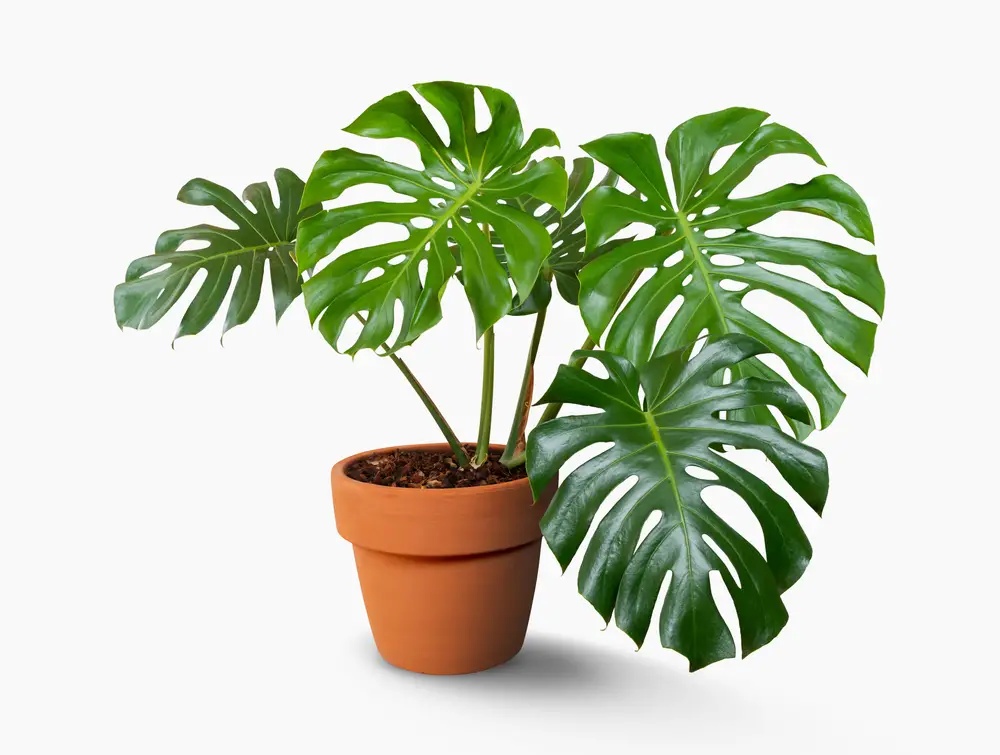
Monstera plants are known for their beautiful, lush leaves. However, brown spots on these leaves can be a sign of a problem. If you notice small brown spots on your Monstera leaves, it is important to take action quickly to prevent the issue from spreading.
Removal of Affected Leaves
One of the first steps in treating brown spots on Monstera leaves is to remove the affected leaves. This can help prevent the spread of any diseases or pests that may be causing the issue.
Use a pair of clean, sharp scissors or pruning shears to cut off the affected leaves. Be sure to dispose of the leaves in a sealed bag or container to prevent any potential spread.
Repotting and Soil Change
Brown spots on Monstera leaves can also be a sign of issues with the plant’s soil. If you suspect that the soil is the problem, repotting the plant and changing the soil can help. Use a high-quality potting soil that is well-draining and rich in nutrients. Make sure to choose a pot that is the appropriate size for your Monstera plant.
Use of Fungicides and Pesticides
If the brown spots on your Monstera leaves are caused by fungus or insects, the use of fungicides or pesticides may be necessary. Neem oil is a natural and effective option for controlling pests on Monstera plants.
Fungicides can be used to treat fungal infections that may be causing the brown spots. Be sure to follow the instructions on the product carefully and use protective gear when applying any chemicals.
In addition to these treatments, it is important to ensure that your Monstera plant is receiving the appropriate amount of water, sunlight, and fertilizer. Overwatering or underwatering can cause brown spots on Monstera leaves, as can exposure to extreme temperatures or humidity levels.
By taking the appropriate steps to treat brown spots on Monstera leaves, you can help your plant thrive and continue to grow beautiful, healthy leaves.
Maintaining Monstera Plants
Monstera plants are popular houseplants known for their large, glossy leaves and unique appearance. However, they can be susceptible to small brown spots on their leaves, which can be caused by a variety of factors.
To maintain healthy Monstera plants and prevent brown spots, it is important to focus on proper hydration, nutrient management, and light and temperature control.
1. Proper Hydration
Monstera plants require consistent, but not excessive, moisture to thrive. Overwatering can lead to root rot and brown spots on the leaves. To avoid this, it is recommended to water the plant when the top inch of soil feels dry to the touch.
The water quality is also important, as chemicals in tap water can cause leaf discoloration. Using filtered or distilled water can help prevent brown spots caused by poor water quality.
2. Nutrient Management

Monstera plants require balanced nutrition to maintain healthy growth and prevent brown spots. Nitrogen deficiencies can cause brown spots on the leaves, but overfertilizing can also be harmful.
It is recommended to use a balanced fertilizer every 2-3 months during the growing season. It is important to follow the instructions on the fertilizer package and avoid overfertilizing, as this can lead to nutrient burn and brown spots on the leaves.
3. Light and Temperature Control
Monstera plants prefer bright, indirect light and warm temperatures between 65-85°F. Direct sunlight can cause brown spots on the leaves, so it is recommended to place the plant near a window with a sheer curtain or use a grow light if natural light is not available.
Cold temperatures can also cause brown spots on the leaves, so it is important to avoid placing the plant near drafts or in areas with fluctuating temperatures.
Frequently Asked Questions
What causes brown spots to appear on monstera leaves?
Brown spots on monstera leaves can be caused by a variety of factors, including overwatering, underwatering, exposure to extreme temperatures and humidity, pests, and excess fertilizers. Additionally, bacterial leaf spot can cause dark spots with yellow halos to appear on the leaves.
How can I prevent brown spots from forming on my monstera leaves?
To prevent brown spots from forming on monstera leaves, it is important to ensure that the plant is not overwatered or underwatered.
Additionally, the plant should be placed in an area with sufficient indirect light and protected from extreme temperatures and humidity. Regularly checking for pests and removing infected plants can also help prevent brown spots from forming.
What are the best treatments for brown spots on monstera leaves?
The best treatment for brown spots on monstera leaves depends on the cause of the spots. If the spots are caused by overwatering or excess fertilizers, leaching off the excess water or fertilizer can help.
If the spots are caused by pests, managing the pests can help. If the spots are caused by bacterial leaf spot, removing infected leaves and treating the plant with a copper fungicide can help.
Are small brown spots on monstera leaves harmful to the plant?
Small brown spots on monstera leaves are generally not harmful to the plant. However, if left untreated, the spots can spread and cause more significant damage to the plant.
Can brown spots on monstera leaves be a sign of a larger issue?
Yes, brown spots on monstera leaves can be a sign of a larger issue, such as root rot or bacterial leaf spot. It is important to identify the cause of the spots and treat the plant accordingly to prevent further damage.
Is it normal for monstera leaves to develop brown spots over time?
It is normal for monstera leaves to develop brown spots over time as the plant ages. However, if the spots are excessive or spreading rapidly, it may be a sign of a larger issue and should be addressed.

Hey, I’m Lisa and I’ve been an avid gardener for over 30 years. I love writing, talking and living in the garden! Feel free to connect with me on my socials below

